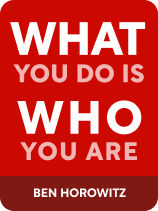

This article is an excerpt from the Shortform book guide to "What You Do Is Who You Are" by Ben Horowitz. Shortform has the world's best summaries and analyses of books you should be reading.
Like this article? Sign up for a free trial here .
When hiring, do you look for particular people or particular skills? When leading, do you give everyone a chance to thrive?
In What You Do Is Who You Are, Ben Horowitz looks to Genghis Khan for lessons on cultivating intentional culture. He identifies three tips for how to create an inclusive culture: take the lead, look for specific skills rather than specific people, and give everyone the opportunity to succeed.
Keep reading for three ways to create an inclusive culture in the workplace.
Tips From Genghis Khan
To learn how to create an inclusive culture, let’s explore Horowitz’s insights from the second of the four historical models: Genghis Khan, founder of the Mongol Empire and the most successful military conqueror in history. At the height of his power, he held over 11 million miles of land across Eurasia with an army of only 100,000. He unified and reinvented Mongol culture to make it more meritocratic and inclusive—and from that new culture, he created a diverse army with a range of skills that allowed him to conquer immense territory while syncretizing additional cultures across Asia and Europe.
(Shortform note: Eleven million miles of land might be difficult to imagine, so another way to visualize Genghis Khan’s conquests is in comparison to other rulers: His territory was more than twice that of any other conqueror—wide enough to bring Eastern and Western civilizations together under one mostly peaceful empire.)
Horowitz argues that cultural leaders in the business world should follow Genghis Khan’s example of fostering inclusivity. To Horowitz, Genghis Khan’s success shows that inclusion—seeking out people different from you to join your team—is a competitive advantage. Inclusivity allows you to make use of talents, worldviews, and approaches you might not find if you limit yourself to working with people like you. Importantly, when Horowitz talks about diversity, he is referring to people with different educational and social backgrounds, in addition to ethnic, racial, and gender diversity.
(Shortform note: In Ego Is the Enemy, Ryan Holiday cites Genghis Khan as an example of a lifelong learner—someone who was able to maintain his success by being open to new ideas and people. According to Holiday, the Mongol empire sustained itself by absorbing the technologies, political systems, arts, and innovations of each culture it invaded. The Mongols traveled with translators and demanded to consult with advisers in each land they conquered. Further, they worked with the royal families of conquered lands to maintain control where no other dynasties could. In doing so, they opened their culture to influences from all parts of the world, which allowed them to develop their own long-lasting influence on the world.)
In this chapter, we’ll explore three lessons Horowitz draws from Genghis Khan, as well as examples from the business world.
Lesson #1: Take the Lead on Inclusivity
Genghis Khan reorganized Mongol society, which had consisted of independent family clans that fought constantly for supremacy. Genghis Khan brought together 31 Mongol tribes encompassing two million people through a common mission: to capture as much wealth as possible. In addition, he united men from diverse clans through bonds of companionship rather than blood by organizing his army in brigades that replaced the old familial clans. (Shortform note: Genghis Khan spent five years reorganizing Mongol society before beginning his campaigns of expansion into neighboring lands. During that time, he reorganized the entire population into diverse military units, moving society away from tribal organization.)
Much like Genghis Khan took the lead in making Mongol culture more inclusive, Horowitz argues you should take the lead in developing and implementing a plan to make your organization inclusive. Horowitz warns against delegating inclusion efforts to a single department tasked with reaching certain demographic targets, such as a designated diversity team. When this happens, he says the goal of being inclusive becomes disconnected from the goal of attracting the best talent to ensure the company achieves its vision. Diversity teams narrowly focus on demographic targets and start seeing people as items on an identity checklist, rather than complete humans with valuable skills and virtues.
| How to Make Inclusion Everyone’s Business Experts agree with Horowitz’s advice to take the lead on diversity and inclusion initiatives. If the CEO is not also the chief inclusion officer and evangelist, the rest of the organization’s efforts will fall flat. However, taking the lead is not enough. Experts offer four other ways you can infuse the entire business with the goal of inclusion: Make diversity and inclusion an integral part of your overall strategy. Encourage other leaders to become personally invested in inclusion efforts. Identify and reduce implicit bias in your company’s processes. Coach leaders to be able to work with everyone on their team. |
Lesson #2: Look for Specific Skills, Not Specific People
According to Horowitz, Gengis Khan identified strengths in each community he conquered, absorbed them into Mongol culture, and taught them across his empire. He allowed soldiers from defeated armies to join him, and he sought out skilled workers in every community he conquered to see if they had any skills that his army lacked.
(Shortform note: This process of acculturation isn’t unique to the Mongols, but rather a characteristic of empires. As Yuval Noah Harari notes in Sapiens, one of the ways in which empires dissolved cultural divides was through their inclusivity and tolerance of conquered cultures. Rulers often adopted and spread norms, beliefs, and traditions from the people they conquered. In this way, empires became hybrids of the civilizations they conquered. For example, imperial Roman culture “was Greek almost as much as Roman,” and the Abbasid culture was a hybrid of Greek, Arab, and Persian cultures.)
Horowitz argues that different groups of people often have different talents—something Genghis Khan recognized. It follows that if there’s a group you’re not hiring from, you’re missing out on the specific talents, communication styles, and customs that group has. Horowitz believes companies miss out because hiring managers often don’t understand or value the talents they don’t personally have. Since they’re not used to seeing those talents, they end up in their blindspot, which prevents them from seeking out people who have them.
| Do Certain Groups of People Share Certain Qualities? Although Horowitz argues in favor of inclusion, he is unwittingly engaging in a type of stereotyping called essentialism—the idea that certain groups of people share certain innate qualities. Often, essentialism is deployed to attach negative characteristics to groups of people. While that’s not Horowitz’s purpose, he nevertheless associates genders and races with specific talents or skills that they allegedly have by virtue of being part of that group. However, it’s possible that the characteristics Horowitz mentions in his book—women being more helpful than men, Black people being more adept at forming relationships than other races—are not essential characteristics of these demographics, but learned traits. Women might be more helpful because they are socialized to be useful, Black people might be more adept at creating relationships because they have learned ways to counteract negative stereotypes about them. So, before attaching certain characteristics to specific groups of people, it’s worth considering why we have concluded that they share them. |
If there’s a specific group of people you don’t seem to be hiring from, you need to identify what talents are in your blindspot. To do so, Horowitz advises getting insight from people with a different background than yours. Ask them to give you feedback on your hiring profiles and let you know of any skills, communication styles, and customs that people from their background have that you’re not taking into consideration. Add the skills to your hiring profile if they are relevant to the role and reduce any blind spots you might have while assessing candidates.
(Shortform note: In Multipliers, Wiseman and McKeown suggest ways to look for talent beyond the usual places. First, acknowledge that there are different kinds of intelligence, not all of which can be measured by standardized tests. Second, look for talent inside and outside your organization, among people with no experience, and people who work for competitors.)
Lesson #3: Give Everyone the Opportunity to Succeed
Genghis Khan challenged traditional hierarchies by making members of his army equal. While most armies had leaders on horseback and soldiers on foot, in his army, everyone rode horses. Similarly, while it was customary for officers to have others carrying their equipment and preparing their food, in Genghis Khan’s army each man took care of his own belongings and prepared his own food.
(Shortform note: Many Mongols resented Genghis Khan’s idea of equality because it went against their traditions. To keep naysayers in check, he hired the sons of officers to be part of the keshik, a force that worked primarily as his private security. Thus, he made it difficult for officers to revolt against him since they appreciated their family’s close connection to the emperor.)
In the same way that Genghis Khan made all his soldiers equal, Horowitz recommends ensuring that everyone who joins your company has an equal opportunity to succeed. As we saw in lesson #1, when companies begin seeing people as demographic statistics, they place an unnecessary burden on those they hire: Employees have to constantly prove themselves to be more than some element of their identity. To avoid creating an uncomfortable culture for your new employees, Horowitz says you should let them know they were chosen because of the valuable skills and virtues they bring—and then give them opportunities to apply them.
Horowitz says the best way to check whether you’re on the right track is to focus on attrition rates instead of hiring rates. Hiring rates show people coming in, but not whether your company offers the right environment for them to thrive. Low attrition rates signal that the people you hired are happy at your company and choose to stay.
| Progressing From Diversity to Inclusion Experts agree with Horowitz that true inclusion is only possible through the cultivation of a work environment where all those people have the possibility to thrive. To move beyond numerical diversity, you can examine how well your organization does on the four dimensions of inclusion: Social inclusion—employees feel accepted and part of the community. Relatedness—employees feel that colleagues care about them. Affective commitment—employees find a sense of meaning in being part of the organization. Organizational identification—employees self-identify with the organization. |
Example: Andreessen Horowitz’s Approach to Inclusion
To diversify the talent pool across his company, Horowitz applied the lessons he learned from studying Genghis Khan. First, instead of hiring consultants or designating a head of inclusion, company leaders built relationships with leaders and organizations with connections to the talent pools they hadn’t been hiring from. Next, they made it a policy that when a manager is developing a hiring profile, people from different backgrounds review it to give input on the skills and virtues to look for. Also, the hiring committee that interviews candidates is composed of people from a variety of backgrounds.
(Shortform note: One way to diversify your talent pool is by adopting a skills-based rather than credentials-based approach to hiring. This approach levels the playing field for people who might not have had access to the same educational or professional opportunities in the past and allows you to tap into new talent. In a skills-based approach, you figure out what you need your future employee to be able to do and list those skills on the job posting instead of listing the degrees or certifications you think would signal that a candidate has what it takes. Then, during the interview process you assess those skills through tests, auditions, or other practical means.)

———End of Preview———
Like what you just read? Read the rest of the world's best book summary and analysis of Ben Horowitz's "What You Do Is Who You Are" at Shortform .
Here's what you'll find in our full What You Do Is Who You Are summary :
- The three reasons leaders should care about culture
- How a sense of purpose boosts employees' performance
- What the Samurai and Genghis Khan can teach you about leadership






